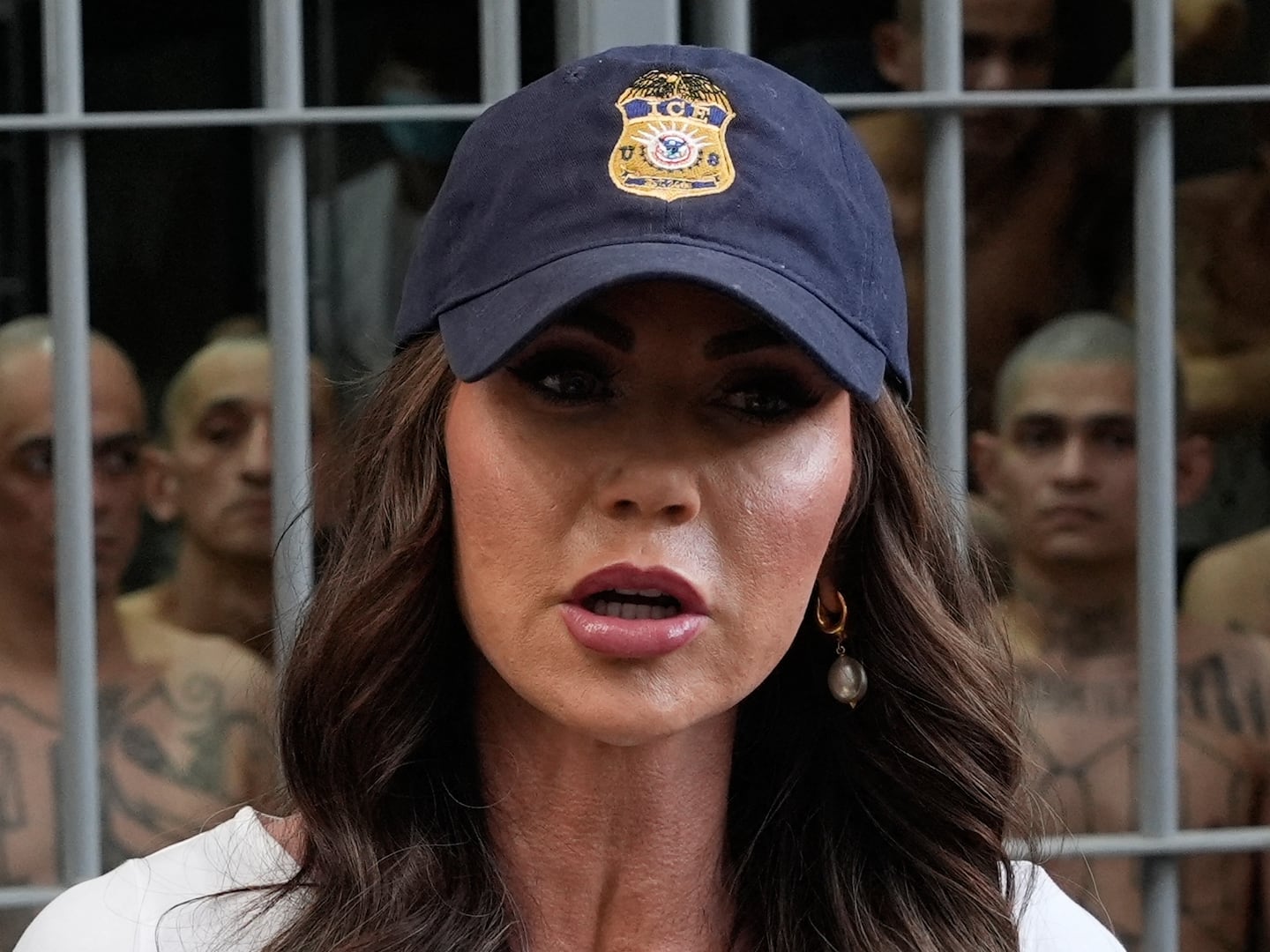The past week has cemented Chris Christie’s place as national conservative star. For more than two years, the governor of New Jersey has been a Republican darling: a tough-talking, no-nonsense moderate who proved he could win in a Democratic state, and who has cut budgets and engaged in battle with public-employee unions. Picking up the pieces from his scandal-prone predecessor, Jon Corzine, the former prosecutor has been the architect of “the New Jersey Comeback.” So last Tuesday, it came as no surprise when it was announced that Christie would be the keynote speaker at the Republican national convention in Tampa, which starts on Monday.
And while Christie has been mum on the details of his big speech, he has made one thing clear: he will not be talking about the New Jersey Comeback. In his typically blunt style, he told reporters Wednesday reporters: “There are three words that are not in my speech Tuesday night: the Jersey Comeback."
That’s strange. In his annual State of the State address delivered last January, Christie proclaimed: “I am proud to report that the New Jersey Comeback has begun.” He made the same claim in his 2011 State of the State address a year before: “New Jersey's comeback has begun.” What accounts for the change in tack? It’s not because of some new-found sense of modesty. It’s because the economic data is making the New Jersey Comeback look more like the Jersey Snore.
Just two days after the announcement that Christie would keynote the GOP convention, the New Jersey Department of Labor inconveniently released the latest unemployment numbers. The state unemployment rate was 9.8 percent in July, the highest in 35 years and the fourth straight month that the rate went up. The state lost 12,000 jobs in the month.
What’s more, compared to the country as a whole, New Jersey’s job performance during Christie’s tenure has been unimpressive at best. Christie took office in January 2010. For the first year of his governorship, the unemployment rates of New Jersey and the U.S. tracked each other tightly, as seen in the chart below. But since his first declaration of a New Jersey Comeback in January 2011, New Jersey has underperformed. Since the beginning of 2011, the country’s unemployment rate has steadily fallen to its current level 8.3 percent. New Jersey’s unemployment rate stayed flat until March 2012, then it began to climb to 9.8 percent, where it stands today.
New Jersey Unemployment Rate data by YCharts
There is, however, only so much a governor can do to affect the employment situation in his state. Employment trends can be national, but they are also often regional. Although the job situation in the Garden State has not been impressive for the roughly two and half years Christie has been in office, it hasn’t been much better in New York or Connecticut—two adjacent states controlled by less-combative Democratic governors. This chart, which shows the unemployment rate in New York, New Jersey, and Connecticut since Christie’s inauguration, indicates that the tri-state metro area is suffering. Since March 2012, all three states have seen slight increases in unemployment. Even so, New Jersey sports the highest rate of the three: 9.8 percent, compared to 9.1 percent for New York and 8.5 percent for Connecticut. Today, all three states are in the bottom third of states when it comes to unemployment: Connecticut is 36, New York 43, and New Jersey is ranked three from the bottom, at 48 (the Bureau of Labor Statistics includes Washington, D.C., in their state rankings). Christie can thank his stars for California, Rhode Island, and Nevada, the three states with the highest unemployment rates.
New Jersey Unemployment Rate data by YCharts
But why is New Jersey stagnating compared to its tri-state neighbors? Tom Wright, the executive director the Regional Plan Association, a think tank and advocacy group that specializes in transit issues, said that New Jersey’s economic situation could not be entirely explained by reference to any short-term policy actions. “New Jersey is taking longer to turn around than many expected,” he noted. Connecticut, Wright said, is benefitting from an influx of reverse commuters—residents of Westchester County and New York City who flock to Stamford and Greenwich for financial services jobs. New York City itself is still a magnet, especially as more and more of the city gentrifies and becomes attractive to young people from out of state. Google, Facebook, and Cornell University are among the companies and institutions that have recently announced significant job-creating investments in New York City. In the past year, New York State has added 113,300 jobs—an increase of 1.3 percent.
In the past year, by contrast, New Jersey has added 40,000 jobs—an increase of almost exactly 1 percent. New Jersey’s job growth could be hampered by the fact that two of the industries that have long-powered the state’s highly populated northern region—finance and pharmaceuticals—have been struggling. In the long term, however, New Jersey’s future employment and economic growth is intimately tied in with the economy of the broader region, especially New York City, “The most important industry for the state of New Jersey is commuting to New York City,” Wright told The Daily Beast.
Christie, however, has to deal with the problems New Jersey is facing now. In response to the discouraging data, Christie has had to adjust his rhetoric, telling reporters last week “I've said right from the State of the State address forward, the New Jersey comeback has begun. Not that the New Jersey comeback has arrived, not that the New Jersey comeback has peaked, not that the New Jersey comeback is realized.” As evidence for this point, Christie pointed to the fact that, in nine of the last 11 months, New Jersey has gained private sector jobs.
But the bad jobs data isn’t for a lack of trying on Christie’s part. Yes, he very publicly squashed a proposed New York-New Jersey rail tunnel that would link Manhattan to its Northern New Jersey suburbs—despite disagreements with the Government Accounting Office over how much it would cost. An analysis from the Regional Plan Association, a transit advocacy group, argued that the tunnel would increase the value of homes near the rail stations by $18 billion.
But the state has plowed resources into big projects that it hopes will create jobs. The first is American Dream Meadowlands, the oft-troubled and much delayed shopping complex being built near MetLife Stadium. The project, which used to be called Xanadu and was described by Christie in 2011 as “by far the ugliest damn building in New Jersey, and maybe America,” has already sucked up over $200 million in state money. It may not be ready for its planned early 2014 opening date.
The second major project Christie has supported is Revel, a high-end Atlantic City casino whose development came to a halt after the financial crisis. The project has received a $261 million tax reimbursement, in exchange for which the state will get 20 percent of the profits. But first the casino needs to make money—some $30 million a month, according to analysts. It only brought in $17.5 million in July putting it in eighth place among Atlantic City casinos.
And while these two projects haven’t done much to improve the state’s employment or fiscal situation, Christie is right to say that New Jersey has been adding jobs, at least until recently. But when it comes to payroll jobs numbers, New Jersey has generally been tracking the national economy. The U.S. has been adding payroll jobs since October 2010. New Jersey’s total payrolls bottomed out in September 2010 and started its mild upwards climb the next month, right when national total employment started to increase. Also, the mere adding of jobs does not necessarily reflect a healthier labor market. Economists and policy makers like to point to the unemployment rate because it accounts for not just the number of people employed, but that number as a portion of the total number of people looking for work.
New Jersey may be experiencing a comeback of a sort, but it’s hardly anything to write home about—or mention in a speech.








